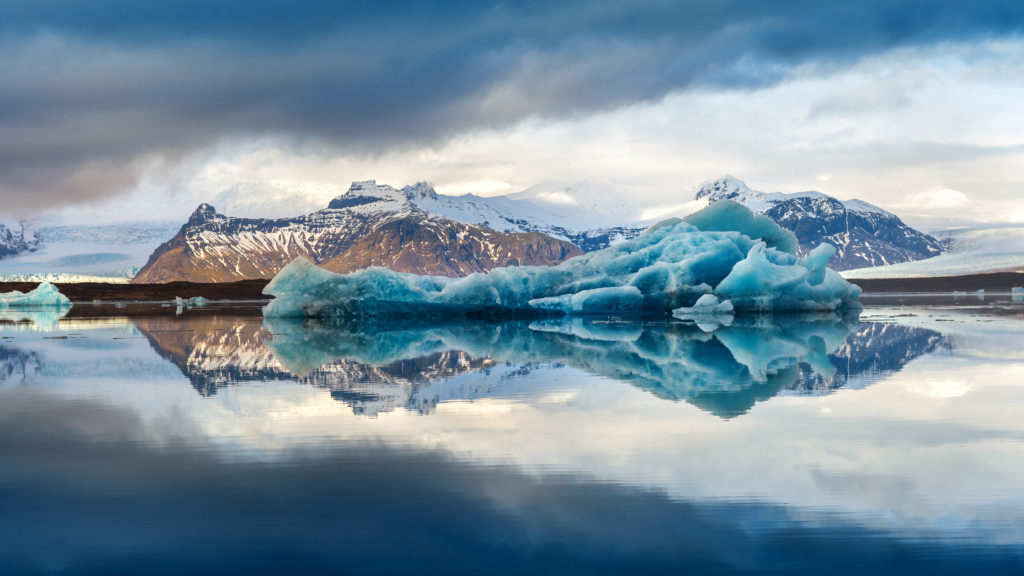Original article (in Serbian) was published on 21/06/2022
The content of a video from the YouTube account “Secret World”, which talks about the interesting things about Antarctica, was suspicious to one of our readers, who thought that some information from the video was incorrect. The editors of FakeNews Tragac contacted experts from the Australian Antarctic Division (AAD) and the Norwegian Polar Institute (NPI), from where we received confirmation that most of the information is correct but also that certain claims are exaggerated or incorrect. The video has over 70,000 views on YouTube and about 2,800 likes. We will present the information we have checked and the findings we have reached.
“You must not take off your gloves or expose your skin to the air without causing frostbite. At work, you can’t even smile without pain. Under your smile, the gums will start to freeze almost instantly”1
Both institutions confirmed that this information is not accurate. Antarctica is undoubtedly extremely cold, but there are variations in temperature across the continent, as well as seasonal temperature variations. AAD experts say that the average annual temperature of Antarctica varies from about -10°C on the coast to -60°C in the highest parts of the interior. “Near the coast, the temperature can exceed +10°C in summer and fall below -40°C in winter. On the elevations in the interior of the continent, the temperature can rise to around -30°C in the summer, but fall below -80°C in the winter”, explains the AAD, adding that the lowest temperature ever recorded on the Earth’s surface was measured at the Vostok station in Antarctica: -89.2 °C.
“In Antarctica, it is forbidden to take anything from the landscape, stone, feather, bone, egg, everything must stay where it rests! The soil must not be removed, nor anything that could bear traces of soil, nothing biological can be removed, but nothing anthropogenic either, the smallest filament can be necessary research equipment”2
This information is correct. Flora, fauna and minerals can only be touched with a special permit for scientific research. The countries of the Antarctic Treaty met in Madrid to sign a pact on the preservation of the Antarctic environment, as well as the surrounding waters of the Southern Ocean south of 60° latitude. The “Madrid Protocol” (Environmental Protection Protocol to the Antarctic Treaty) entered into force in 1998. “Annex II of the Environmental Protocol prohibits the removal of fauna and flora from Antarctica, except in accordance with a permit. Article 7 of the Protocol on the Environment prohibits all activities related to mineral resources in Antarctica, except as part of scientific research”, they state in the NPI and add that the general guidelines for visitors to Antarctica (Resolution 4 from 2021) also specify that visitors “should not bring souvenirs, whether artificial, biological or geological objects, including feathers, bones, eggs, vegetation, soil, rocks, meteorites and fossils”.
“It is also forbidden to bring any external life form, other than yourself, to Antarctica”3
According to Annex II of the Protocol on the Environment, the introduction of non-native species to the continent is prohibited unless there is a special permit for this. “Introduced species have caused major ecological problems on every other continent, and they have also caused significant changes in the ecology of most subantarctic islands. Australia hosted the first international meeting to discuss wildlife diseases in Antarctica”, AAD said to Tragac.
“Before setting foot on Antarctic soil, travelers must thoroughly clean and decontaminate all clothing and equipment. It is necessary to wash all the clothes you will wear in Antarctica – both underwear and outerwear. Visitors must undergo an inspection of their clothing and equipment before the first landing. Before you set foot on Antarctica, you must soak the soles of your boots in ice water and clean their surfaces with a scrubbing brush or a toothed mat”4
There are guidelines for visitors to reduce the risk of introducing non-native species. This process includes thoroughly cleaning the clothes before visiting Antarctica and cleaning the boots before landing, which should be as clean as possible. Complete instructions are explained in the Nonnative Species Handbook.
“There are zones in Antarctica that no one is allowed to visit, and no plane is allowed to fly over them”5
The NPI said to Tragac that – as far as they know – there are no “no-fly zones” in Antarctica but that all flights in Antarctica must be approved by the competent state authorities, who can set restrictions on flight activities as necessary. On the other hand, the NPI explains that there are specially protected areas designated as Antarctic Specially Protected Areas (ASPA) and Antarctic Specially Managed Areas (ASMA). “Some of them have so-called ‘inviolable areas’, where no human activities are allowed. All visitors must obtain special permits to enter ASPA and ASMA”, explained the NPI.
“It is possible to visit Antarctica, but only accompanied by members of observation groups, in the North Korean style”6
The rules governing the visit protocol are not entirely universal, say AAD and NPI, so visitors must research the rules of the country they come from. All visitors to Antarctica must have a permit from a specific national authority to visit Antarctica. If someone travels to Antarctica as part of a group, the group leader must have a permit.

